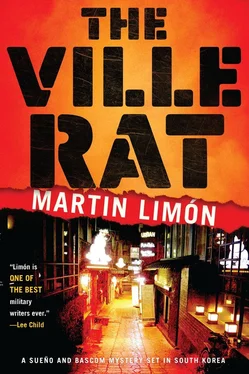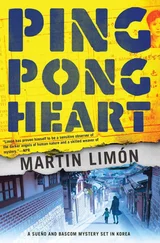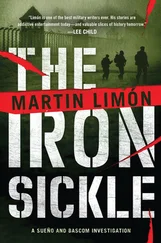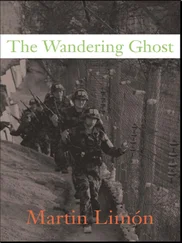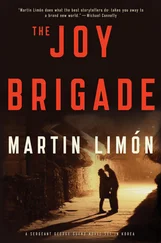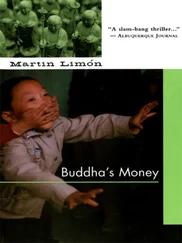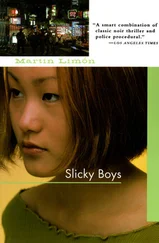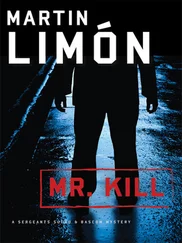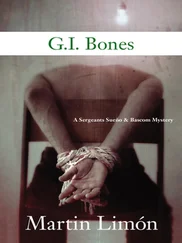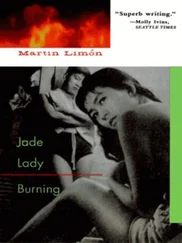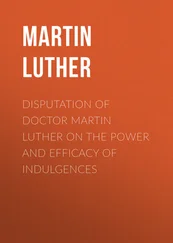Martin Limon - The Ville Rat
Здесь есть возможность читать онлайн «Martin Limon - The Ville Rat» весь текст электронной книги совершенно бесплатно (целиком полную версию без сокращений). В некоторых случаях можно слушать аудио, скачать через торрент в формате fb2 и присутствует краткое содержание. Год выпуска: 2015, Издательство: Soho Press, Жанр: Полицейский детектив, на английском языке. Описание произведения, (предисловие) а так же отзывы посетителей доступны на портале библиотеки ЛибКат.
- Название:The Ville Rat
- Автор:
- Издательство:Soho Press
- Жанр:
- Год:2015
- ISBN:нет данных
- Рейтинг книги:3 / 5. Голосов: 1
-
Избранное:Добавить в избранное
- Отзывы:
-
Ваша оценка:
- 60
- 1
- 2
- 3
- 4
- 5
The Ville Rat: краткое содержание, описание и аннотация
Предлагаем к чтению аннотацию, описание, краткое содержание или предисловие (зависит от того, что написал сам автор книги «The Ville Rat»). Если вы не нашли необходимую информацию о книге — напишите в комментариях, мы постараемся отыскать её.
The Ville Rat — читать онлайн бесплатно полную книгу (весь текст) целиком
Ниже представлен текст книги, разбитый по страницам. Система сохранения места последней прочитанной страницы, позволяет с удобством читать онлайн бесплатно книгу «The Ville Rat», без необходимости каждый раз заново искать на чём Вы остановились. Поставьте закладку, и сможете в любой момент перейти на страницу, на которой закончили чтение.
Интервал:
Закладка:
Martin Limon
The Ville Rat
Ville \?vil \ noun: GI slang for village, usually in Asia.
– 1-
We left the Main Supply Route and turned onto the two-lane blacktop that led toward the village of Sonyu-ri. The road dropped off precipitously and we both held onto the overhead roll bar as the jeep bounced downhill. When we reached ground level, the tire chains caught and began to crunch reassuringly on freshly fallen snow. Still, even though the time was already an hour past dawn, visibility was poor. Ernie switched on the headlights.
“Are you sure you’re using the right map there, pal?”
“Official army map,” I told him, slapping the folded sheet.
“What’s the date on it?”
I aimed the beam of my flashlight and checked. “Twenty years ago.”
“Right at the end of the Korean War,” Ernie said. “This area north of Seoul has changed since then. Half the roads probably aren’t even listed.”
And half the villages, I thought. With two million dead out of a population of twenty million at the end of the war, the Republic of Korea was only now beginning to recover. And they were still nervous about another North Korean invasion. With 700,000 bloodthirsty Communist soldiers on the far side of the Demilitarized Zone, just a few miles from here, who could blame them? On the trip from Seoul, we’d passed two ROK Army checkpoints and driven around a mile-long row of armor-blocking cement pilings, and rolled beneath tank traps set to explode if the northern hordes ever decided to come south again.
My name is George Sueno. My partner Ernie Bascom and I are agents for the 8th United States Army Criminal Investigation Division in Seoul. The call had come in at oh-dark-thirty. Our presence was requested at a crime scene some fifteen miles north of the capital city in a village known as Sonyu-ri. Said presence was requested now . Or, as 8th Army liked to say, immediately if not sooner.
We continued to roll down the snow-covered road, passing the Paju-gun County Health Clinic on our right and then a few idle three-wheeled tractors parked along the edge of a four-foot-high berm. Rows of small farmhouses sat cozy in the brisk winter breeze. Fifty yards farther along, just where the map told me they would be, a cluster of blue police sedans waited atop a rise. As we bounced up the dirt pathway, all eyes were on us, even Mr. Kill’s.
His real name was Gil Kwon-up, chief homicide inspector for the Korean National Police, but “Kill” is what the American Army MPs had taken to calling him. Changing “Gil” to “Kill” made some sort of sense, at least in GI minds. Whenever they could turn a Korean name or word into something American, they did it. Ernie and I had worked with Mr. Kill before, on more than one case, and somehow we had won his grudging respect. Ernie for his ability to blend in with GIs everywhere, under any conditions, and me for my facility with the Korean language and interest in Korea’s five-thousand-year-old culture.
Ernie drove up closer to the other vehicles, turned off the engine, and set the emergency brake. We pushed open the stiff canvas doors, climbed out of the jeep, and trudged to the top of the rise.
Mr. Kill wore a broad-brimmed fedora and a dapper overcoat made of thick material. He stood with his hands shoved deep into his pockets, staring at us. He was tall for a Korean but at six-foot-one Ernie loomed over him. I was three inches taller than Ernie, but to show respect for Mr. Kill’s rank, I stopped lower down on the ridge. We were eye to eye. I nodded a greeting. So did Ernie. Kill pulled his right hand out of his pocket and motioned for us to follow. We did, downhill to the ice-encrusted banks of the Sonyu River.
In the stray beams of a half-dozen flashlights, it was the splash of color I saw first. Bright red. Ernie saw it too. We both stopped. Mr. Kill took two steps forward and then crouched, both to get himself a better view and to give us time to absorb the scene. The rays of illumination coalesced around her, like a spotlight introducing a star. It was then I saw the stiff flesh and the raven black hair.
She was beautiful. Like an ice princess.
Somehow her body had been washed up against the shore and any further drift had been stopped by a foot-high shelf of crystalline white snow. She was wearing a chima-jeogori , a traditional Korean dress made of flowing red silk. The skirt had been tied breast-high, as was the custom, and embroidered with white cranes flapping broad wings to the sky. The short blouse was made of a sturdier material and was canary yellow and tied in the front with a long blue ribbon. Her eyes were open, staring into the opaque grey sky, and the smooth flesh of her face seemed to have been bleached pure white by death. A cold breeze blew down from the north. I shuddered. So did Ernie. So did every cop milling about the crime scene, except for Mr. Kill.
He was known to be impervious to petty feelings. Heartless, some called him. But I knew that when he was on a crime scene he didn’t have time for emotions, only thought. And the processes of his mind, coupled with his vast investigative experience, were not good news for the perpetrators of any crime scenes he was assigned to.
I stared at the woman again. Who could have done such a thing? Who could have so cruelly abandoned her in this frigid, unrelenting stream?
The Sonyu River does not run deep. No more than three or four feet now and even less in the dry summer months. But due to the cold snap that had drifted down from Manchuria in recent weeks, it was frozen almost solid, except for the five or six inches of frigid water that rushed by beneath the ice. The river was about twenty feet wide and at its center, for a width of about two yards, it ran quickly and freely.
Ernie looked upstream. “How far did she drift?” he asked.
Mr. Kill nodded at the question but didn’t answer.
Upriver, a basketball-sized chunk of ice broke free and swirled toward the body. It spun madly and crashed into the red skirt, lifting it lewdly up pale legs.
“No underwear,” Ernie said.
Which was unusual. Part of the traditional female outfit during the winter was a wool tunic and long underpants and warm socks under cotton-stuffed slippers. All designed to combat the long Korean winter. None of these appurtenances were worn by the Lady of the Ice.
The silk string that was used to secure the wrapped skirt was loose, trailing limply in the slow current.
As if we were thinking the same thing, both Ernie and I turned and gazed upriver. The meandering stream ran through rice paddies and past small animal pens and near farmhouses, and although we couldn’t see it from here, we both knew that just over the rise was an installation we were both familiar with: Camp Pelham, home of the 2nd of the 17th Field Artillery, which maybe explained why Mr. Kill had called for us. Even though he was the chief homicide investigator of the Korean National Police, under the Status of Forces Agreement signed between the US and the Republic of Korea, he had no jurisdiction on American military compounds.
A large van pulled up and a team of forensic technicians climbed out. They all wore blue smocks and a few of them toted metal briefcases. Stenciled on their backs in block hangul script was the word kyongchal . Police. Mr. Kill left us and gave them a quick briefing. Soon, they were plotting their grids and slipping on knee-high rubber wading boots.
Another group of cops had apparently been canvassing the neighborhood and reported back to Mr. Kill. He listened to them and nodded and then barked further orders, pointing at the homes off in the distance. The men saluted and left.
He walked back to us. Wearily, he nodded toward the corpse. “Your thoughts,” he said.
Читать дальшеИнтервал:
Закладка:
Похожие книги на «The Ville Rat»
Представляем Вашему вниманию похожие книги на «The Ville Rat» списком для выбора. Мы отобрали схожую по названию и смыслу литературу в надежде предоставить читателям больше вариантов отыскать новые, интересные, ещё непрочитанные произведения.
Обсуждение, отзывы о книге «The Ville Rat» и просто собственные мнения читателей. Оставьте ваши комментарии, напишите, что Вы думаете о произведении, его смысле или главных героях. Укажите что конкретно понравилось, а что нет, и почему Вы так считаете.
